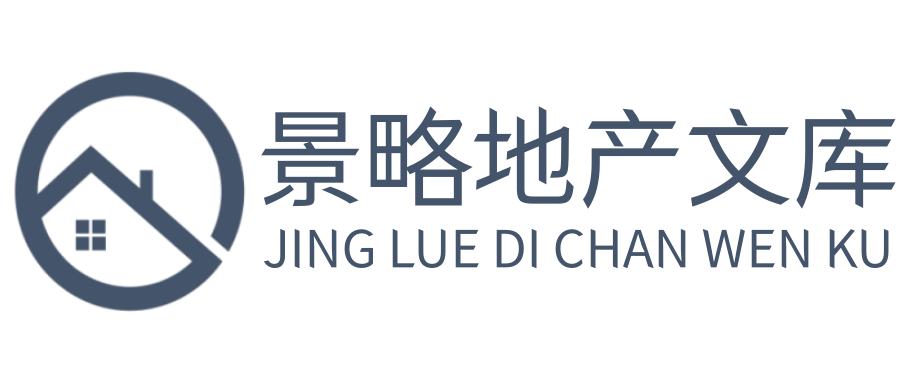1、Written byESG development andprospects of key industriesin the Guangdong-HongKong-Macau Greater BayArea1.ESG driving force and development inthe Greater Bay Area42.Development of key industries underthe ESG trend8Case studySmart energy demonstrationcommunity in NanhaiCase studyFoshan Gaoming Hydroge
2、n-PoweredTram Demonstration Line3.The role of Green and SustainableFinance in promoting ESG andsupporting key industries22Summary25ContentsESG development and prospects of key industries in the Guangdong-Hong Kong-Macau Greater Bay Area4ESG driving force and development inthe Greater Bay AreaESG dev
3、elopment and prospects of key industries in the Guangdong-Hong Kong-Macau Greater Bay Area5Government policies promote ESG developmentEnvironmental,social and governance(ESG)and climate change are gaining global attention,and the Chinese mainland and Greater Bay Area(GBA)are no exception.In its 14th
4、 Five-YearPlan and Long-Range Objectives Through the Year 2035,the Central Government has made itclear that it supports the development of green finance in the country1.Specifically,at theconference on the 14th Five-Year Plan,the Central Government emphasized its commitment tomaking Hong Kong a gree
5、n finance center in the GBA.The Hong Kong Special Administrative Region(HKSAR)Government is also eager to promoteHong Kong as a premier financing platform for governments and green enterprises in themainland and around the globe.Its plan to achieve this objective was stated in its Policy Address2022
6、,where it was announced that the Council for Sustainable Development will be reorganizedinto the new Council for Carbon Neutrality and Sustainable Development.The new Council willadvise on decarbonization strategies and support sustainable development and decarbonizationefforts.With sustainable deve
7、lopment being a strategic priority for the GBA,significant resources will bedirected towards the regions sustainable development,thereby creating growth andopportunities in ESG and green and sustainable finance.Investors demand ESG enhancements and comprehensive disclosureCalling for greater transpa
8、rency and data accountability from businesses,investors and thecapital market are pushing for improved ESG data disclosure and consistency.A surveyconducted by EY in 2021 found that 74%of investors said the Covid-19 pandemic made themmore likely to divest based on poor ESG performance2.The EY Global
9、 Corporate Reporting andInstitutional Investor Survey in 2022 showed that 99%of investors surveyed use companies ESGdisclosures as part of their investment decision-making process,with 74%using a rigorous andstructured approach.By comparison,the same surveyin 2018 found that only 32%of investorssurv
10、eyed were using a rigorous approach.These results show a significant shift in investorattitudes.Sustainability disclosures are now considered an important insight for investorslooking to understand the impact of an issue on business performance,risk and long-termgrowth prospects3.Companies in the GB
11、A are also receiving more ESG-related inquiries frominvestors.According to an investor relation survey by the SZSE4,half of the surveyed companiessaid they had answered ESG-related questions and disclosed ESG-related information in 2020.Listed companies under the SZSE are beginning to develop ESG aw
12、areness and are willing toexchange ESG information with investors.With growing expectations and demands frominvestors,companies will ultimately need to place greater emphasis on ESG management anddisclosure.1.Outline of the 14th Five-Year Plan(2021-2025)for Economic and Social Development and Long-r
13、ange Objectivesthrough the Year 2035 of the Peoples Republic of China p.96,https:/ Stock Exchange,https:/ development and prospects of key industries in the Guangdong-Hong Kong-Macau Greater Bay Area6Regulatory bodies tighten ESG disclosure requirementsRegulatory bodies in the GBA are stepping up on
14、 their ESG disclosure requirements,calling formore transparency and comparability,by mandating more comprehensive ESG and climatechange reporting.Published by the Hong Kong Stock Exchange(HKEX),the updated ESGReporting Guide for listed companies came into effect on 1 July 2020,requiring listedcompan
15、ies to publish a board statement on ESG and to provide enhanced disclosure ofenvironmental targets,climate-related issues and social key performance indicators(KPIs).In December 2021,the HKEX went further and revised its Corporate Governance(CG)Code torequire ESG reports to be published alongside an
16、nual reports,starting in fiscal year 20225.TheHKEX also issued a Guidance on Climate Disclosures in 2021 to help issuers align with the TaskForce on Climate-related Financial Disclosures(TCFD)recommendations.This mandatorydisclosure will be rolled out across relevant sectors by 2025.The Cross-Agency
17、 Steering Group,co-chaired by the Hong Kong Monetary Authority(HKMA)and Securities and FuturesCommission(SFC),has also announced similar plans for 2025 across relevant sectors6.Fund managers are also subject to higher ESG disclosure standards.In 2021,the SFC released anew circular that provided furt
18、her guidance on enhanced disclosure for ESG funds and additionalguidance for funds with a climate-related focus.The SFC also introduced new requirements forclimate risk management for all fund managers7.In August 2022,the SFC published its Agendafor Green and Sustainable Finance8,which outlined furt
19、her steps to support Hong Kongsposition as a regional green finance center.The Agenda focuses on corporate disclosures,asset management and ESG funds and carbonmarkets.Key points include the possibility of adopting the International Sustainability StandardsBoard(ISSB)climate standards as part of the
20、 reporting framework,and aligning Hong Kongsdisclosure with the TCFD with it.At the 2022 United Nations Climate Change Conference,orCOP27,the ISSB made key announcements about the implementation of climate-relateddisclosure standards in 20239.To stay compliant with regulatory requirements,companies
21、in the GBA must keep abreast ofregulatory developments and aim for a more comprehensive ESG disclosure.Although the Shenzhen Stock Exchange(SZSE)currently has no mandatory ESG disclosurerequirements for listed companies,it released an ESG Ratings Methodology and ESG Indices10inJuly 2022 to meet the
22、growing demand for ESG investments and to advance the development ofa green and low-carbon economy in support of Chinas carbon peak and carbon neutrality goals.5.HKEX,https:/.hk/News/Regulatory-Announcements/2021/211210news?sc_lang=en6.HKMA,https:/www.hkma.gov.hk/eng/news-and-media/press-releases/20
23、21/07/20210715-4/7.SFC,https:/apps.sfc.hk/edistributionWeb/gateway/EN/circular/products/product-authorization/doc?refNo=21EC278.SFC,https:/www.sfc.hk/en/Sustainable-finance9.International Financial Reporting Standards Foundation,https:/www.ifrs.org/news-and-events/news/2022/11/issb-cop27-progress-im
24、plementation-climate-related-disclosure-standards-in-2023/10.Shenzhen Stock Exchange,http:/ development and prospects of key industries in the Guangdong-Hong Kong-Macau Greater Bay Area7Carbon market takes off in the GBAThe development of a carbon market has been a key focus for regulatory bodies in
25、 the GBAand the HKSAR Government.The SFC is committed to supporting Hong Kong as a regionalgreen finance center,with a particular focus on the carbon market.To that end,the SFC isworking with the Cross-Agency Steering Groups Carbon Market Work Stream to establish aregulatory framework for the carbon
26、 market.In 2022,the Steering Group published a Carbon Market Opportunities for Hong KongPreliminary Feasibility Assessment11,which outlines a plan for Hong Kong to become a global,high-quality voluntary carbon market while fostering cooperation within the GBA and with themainland.The feasibility stu
27、dy identified four key directions for the Carbon Market WorkStream:Develop Hong Kong into a global,high-quality voluntary carbon marketCollaborate with relevant authorities and stakeholders to work towards establishing theGBA Unified Carbon Market in line with mainland policiesExplore opportunities
28、to link international investors with the GBA Unified Carbon Marketand potentially the national emissions trading system(ETS)Strengthen cooperation with the Guangzhou Futures Exchange on carbon marketdevelopment to enable Hong Kong to act as the mainlands offshore risk managementcenterOn October 2022
29、,the HKEX launched Core Climate,a new international carbon marketplacethat will provide transparent and effective trading of voluntary carbon credits and instrumentsacross Asia and beyond.This marks a major milestone for carbon market development in HongKong.The platform connects corporates and inve
30、stors with the tools and resources they needto decarbonize their operations.With its one-stop solution,sourcing,trading,settlement andretirement of all types of well-governed and internationally certified carbon credits projectscan be facilitated on the platform,connecting the East and the West in t
31、he quest for low-carbon solutions.Market participants,particularly corporates in the GBA,can purchase carboncredits from internationally certified carbon projects from around the world,including carbonavoidance,reduction and removal projects to help them transition to a low-carbon future12.Thanks to
32、 its leading position as an international financial center and close ties to the mainland,the carbon market in Hong Kong has the potential to serve as a facilitator and connect themainland with the rest of the world by directing more global capital to the mainland and theGBA through carbon credit pr
33、ojects.This creates numerous opportunities in the fight againstclimate change.11.Green and Sustainable Finance Cross-Agency Steering Group Carbon Market Workstream,https:/www.sfc.hk/-/media/EN/files/CEOO/CASGWS3PreliminaryCarbonFeasibilityAssessmentEnglish3032022.pdf12.HKEX,https:/.hk/Join-Our-Marke
34、t/Sustainable-Finance/Core-Climate?sc_lang=enESG development and prospects of key industries in the Guangdong-Hong Kong-Macau Greater Bay Area8Supporting social entrepreneurship and impact investingWhile the focus on environmental issues has gained widespread support in various sectors,thesocial com
35、ponent of ESG is still in its infancy.As ESG becomes increasingly important,socialentrepreneurship incubation and impact investing have become key areas of focus in the GBA.Social entrepreneurship aims to incorporate social issues into business models to solve socialproblems,rather than just providi
36、ng charity and funding.Impact investing is an investmentstrategy that aims to generate financial returns while also addressing social and environmentalissues.In Hong Kong,we are seeing an increasing number of social enterprises and impactenterprises that aligned their business with sustainable devel
37、opment goals and impact investingis becoming a way for these companies to secure funding for their business development.Given these trends,companies in the GBA are encouraged to seize opportunities and minimizerelevant ESG or climate risks by prioritizing enhancement of their ESG and climate changem
38、anagement.In particular,companies in the GBA should focus on the industries mentionedbelow.ESG development and prospects of key industries in the Guangdong-Hong Kong-Macau Greater Bay Area9Development of key industries underthe ESG trendESG development and prospects of key industries in the Guangdon
39、g-Hong Kong-Macau Greater Bay Area10New energyOverview of new energy development in the GBATransforming the energy sector is critical to decarbonization efforts.In recent years,expertshave explored a variety of renewable energy sources in order to reduce reliance on fossil fuels.Solar and wind power
40、 have received the majority of investment in renewable energy,resultingin well-developed and mature industry chains globally.As the worlds factory,China has a largemarket share in the manufacturing of solar and wind energy devices,including photovoltaicpanels and wind turbines.According to the Inter
41、national Energy Agency(IEA),China is predicted to supply nearly all ofthe key building blocks for solar panel production worldwide through 2025.Chinas share ofglobal polysilicon,ingot and wafer production is expected to reach almost 95%in 202513.Datafrom the Global Wind Energy Councils Market Intell
42、igence shows that China holds a 58%marketshare of global wind turbine manufacturing capacity14.According to BloombergNEF15,six of thetop 10 global wind turbine makers in 2020 were Chinese companies.Although the GBA is not a major manufacturing area for these products,the regions highenergy demand an
43、d low energy self-sufficiency rate16remain to be key challenges on itsdecarbonization journey.In line with national decarbonization policies,the Energy Bureau ofGuangdong Province released the 14th Five-Year Plan for Energy Development in early 2022,which aims to vigorously develop advanced offshore
44、 wind and solar power and accelerate thecultivation of emerging industries such as hydrogen energy,energy storage and smart energy.Among these,hydrogen energy is considered one of the main alternatives to fossil fuels due toits wide availability.At least five cities in the GBA have announced plans f
45、or the development ofhydrogen energy and have begun conducting feasibility studies and experiments on hydrogen,particularly hydrogen fuel cells.According to documents from the Guangdong Provincial Development and Reform Commission,the GBA aims to become a hub for the development of the hydrogen ener
46、gy industry and toexpand the hydrogen energy application market through multiple channels.Guangzhou andShenzhen aim to become research and development and manufacturing bases for high-temperature fuel cells and systems.Guangzhou,Foshan and Dongguan are targeting thedevelopment of high-end hydrogen e
47、nergy equipment industries.Cities such as Huizhou andDongguan are focusing on the development of hydrogen energy storage and transportationindustries.13.IEA,https:/www.iea.org/reports/solar-pv-global-supply-chains/executive-summary14.Global Wind Energy Council,https:/ Government of Guangdong Provinc
48、e,https:/ development and prospects of key industries in the Guangdong-Hong Kong-Macau Greater Bay Area1117.Department of Housing and Urban-Rural Development of Guangdong Province,http:/ Daily,https:/ studySmart energy demonstration community in NanhaiNanhai District in Foshan is home to Chinas firs
49、t intelligent energy demonstrationcommunity17,located in the town of Danzao.The community aims to industrialize fuelcell distributed facilities that provide both heat and electricity and will be the firstcarbon-neutral neighborhood in mainland China.It is also a key part of the FoshanNanhai Hydrogen
50、 Energy Center,which is being developed with the support of theNanhai government to become a leading hydrogen energy center in the region,attracting research and development,human capital and other resources.The center willinclude a Hydrogen Energy Museum,a hostel,and will be located near the Nanhai
51、Danzao Japanese SME Industrial Park.The ultimate goal of the community project is to create a complementary smart energysystem using wind,light,electricity and gas.The core of the system is a multi-energycomplementary microgrid that is powered by fuel cell distributed cogenerationequipment.Through t
52、his system,the demonstration community will be able to promotethe interconnection of renewable energy and the trial implementation of nationalstandards and norms for hydrogen energy in housing and buildings.The project is divided into two phases.During the first phase,the community relies onthe exis
53、ting urban gas supply network to provide energy to most of the communitythrough fuel cells.A smart energy management control system is also introduced toincrease energy efficiency.Upon completion of the first phase,the second phase willintroduce photovoltaic devices to generate electricity,which wil
54、l be used to producehydrogen through the electrolysis of water18.This will allow the community tocompletely sever its reliance on the electricity grid and gas pipeline,becoming a trulycarbon-neutral community.In comparison with current practices,the demonstration community is expected toreduce carbo
55、n emissions and costs by about 50%and 45%respectively.This willaccelerate the low-carbon development of cities in China and the development ofhydrogen communities.By building the countrys first smart energy communitydemonstration project,the GBA has the opportunity to take a leading role in thedevel
56、opment of the smart energy industry,quickly forming a smart energyindustrialization base and gathering industrial clusters for the development of futureurban industries.It will also create a new opportunity for Chinas fuel cell distributedenergy and smart energy industry and help achieve“carbon peak
57、ing and carbonneutrality”as soon as possible.ESG development and prospects of key industries in the Guangdong-Hong Kong-Macau Greater Bay Area12Opportunity and challenges of new energy in the GBAThe GBA presents several opportunities for green and low-carbon development,particularly inthe areas of p
58、ower supply and grid integration.Hydrogen energy is seen as a key direction fornew energy development,and the region is well-positioned to take advantage of emergingapplications in this field.However,there are also challenges to be addressed.For example,the potential of terminalapplication scenarios
59、 has not yet been fully explored.While the transportation sector iscurrently a key focus for the downstream application market of the hydrogen energy industry,other potential fields such as energy storage,petrochemical,steel and construction have notyet been fully tapped due to limited supplies and
60、high fuel costs.To fully realize the potential ofhydrogen as a sustainable energy source,global efforts in the development of green hydrogenwill be necessary.Green transportationTransportation is a significant contributor to greenhouse gas(GHG)emissions,accounting forapproximately one quarter of glo
61、bal GHG emissions in 201919.To meet carbon neutralitytargets,it is crucial to decarbonize the transportation sector.The Chinese mainland and HongKong have implemented a range of policies and measures to promote green transportation anddecarbonization.Key developments in this area include electric ve
62、hicles(EVs)and supportinginfrastructure,hydrogen as an alternative fuel and intercity railway networks.Promoting the use of Electric Vehicles(EVs)to pursue zero vehicular emissionsThrough a series of policies including government strategies,regulations and incentives,Chinahas seen significant growth
63、 in its EV market.According to the China Association of AutomobileManufacturers,the penetration rate of new energy vehicles in China reached 33.8%inNovember 2022,up from 5.4%in 202020.19.Intergovernmental Panel on Climate Change,https:/report.ipcc.ch/ar6/wg3/IPCC_AR6_WGIII_Full_Report.pdf20.China As
64、sociation of Automobile Manufacturers,http:/ development and prospects of key industries in the Guangdong-Hong Kong-Macau Greater Bay Area13According to the China Electric Vehicle Charging Infrastructure Promotion Alliance21,Guangdong has the largest EV charging network in China,with 345,126 publicc
65、harges and 19,116 charging stations as of September 2022.Guangdong Power GridCorporation plans to invest RMB532 million(approx.US$74 million)during the 14thFive-Year Plan period(2021-2025)to further accelerate the construction of chargingfacilities22.In Hong Kong,there are a total of 39,114 EVs and
66、5,283 public EVcharges as of September 202223.The HKSAR Government has also released the HongKong Roadmap on the Popularization of Electric Vehicles,which outlined long-termpolicy objectives and plans to promote the adoption of EVs and supportinginfrastructure.Key measures outlined in the roadmap in
67、clude the cessation of newregistrations for fuel-propelled and hybrid private cars in 2035 or earlier,trials forelectric public transport and commercial vehicles,and the expansion of the EVcharging network across Hong Kong24.As part of these efforts,the HKSARGovernment will provide an additional 7,0
68、00 parking spaces with EV chargers ingovernment premises by 2025,as outlined in the recently announced Policy Address202225.The government has also established a HK$3.5 billion(approx.US$450million)Home Subsidy Scheme to subsidize the installation of EV chargers for existingprivate residential build
69、ings26.The widespread adoption of EVs will help improveroadside air quality and reduce GHG emissions,ultimately helping Hong Kong achievezero vehicular emissions before 2050 and contributing to the regions carbonneutrality targets.21.https:/ Economic Net,http:/ Protection Department,https:/www.epd.g
70、ov.hk/epd/english/environmentinhk/air/promotion_ev/promotion_ev.html24.Environmental Protection Department,https:/www.epd.gov.hk/epd/english/resources_pub/policy_documents/index.html25.Policy Address 2022,The Chief Executives 2022 Policy Address26.Environmental Protection Department,https:/www.evhom
71、echarging.gov.hk/enESG development and prospects of key industries in the Guangdong-Hong Kong-Macau Greater Bay Area14Hydrogen as an alternative fuelHydrogen fuel cells generate electricity with minimal pollution by converting hydrogen andoxygen into electricity.While still in its early stages,hydro
72、gen can potentially play a significantrole in decarbonizing energy-intensive industries,particularly in transportation.The Guangdong Provincial Development and Reform Commission released a three-year(2022-2025)action plan in August 2022 with the goal of positioning Guangdong as a global leader inthe
73、 hydrogen vehicle industry.According to the plan,Guangdong aims to have more than10,000 fuel-cell electric vehicles(FCEVs)on the road,build more than 200 hydrogen refuellingstations,and increase annual hydrogen supply capacity to more than 100,000 metric tons by2025.The province will also provide su
74、bsidies of up to RMB2.5 million(approx.US$350,000)to hydrogen refuellingstations that begin operations between 2021 and 2025 and have a dailyrefuellingcapacity of more than 500 kg27.At present,Hong Kong has yet to set its own hydrogen-specific targets and strategies.Topromote the local adoption of F
75、CEVs,the HKSAR Government established an inter-departmental working group in 2021.The working group is tasked with assessing theimplementation issues for FCEVs,including the supply of hydrogen energy,supportinginfrastructure,safety considerations,and regulation and legislation28.In August 2022,alead
76、ing bus company in Hong Kong introduced Hong Kongs first hydrogen-powered double-decker bus,which was specially designed and built for the regions unique topography.The busis equipped with a 450 kWh battery and has an estimated range of over 200 km29.However,thehydrogen-powered bus has not yet been
77、put into operation due to the lack of relevantregulations in Hong Kong.The deployment of hydrogen in the transportation sector requires a comprehensive policy andregulatory framework.Several jurisdictions,including South Korea,have passed hydrogen-specific legislation governing the production,storag
78、e,transportation,distribution and use ofhydrogen.South Koreas Hydrogen Economy Promotion and Hydrogen Safety Management Law,which came into effect in 2021,focuses on three key areas:hydrogen vehicles,refuellingstations and fuel cells30.The implementation of the law is expected to accelerate South Ko
79、reasgoal of increasing FCEV production to 6.2 million and raising the number of hydrogen refuellingstations to 1,200 by 204031.The GBA could consider a similar approach in establishing acomprehensive regulatory framework for the use of hydrogen in the transportation sector.The competitiveness of FCE
80、Vs largely depends on the costs of hydrogen.Currently,greenhydrogen costs around RMB40(approx.US$5.5)per kilogram in Guangdong32.By 2025,theretail price of hydrogen for FCEVs in Guangdong is projected to fall to less than RMB30(approx.US$4.4)per kilogram33,making it a more affordable and attractive
81、option.In the future,theGBA can leverage its advantage of having a fully integrated hydrogen supply chain and beingthe largest FCEV industry cluster in China to produce large-scale hydrogen.As technologyimproves and production scales,the costs of hydrogen will become more economically viable.27.Guan
82、gdong Provincial Development and Reform Commission,http:/ Government press releases,https:/www.info.gov.hk/gia/general/202202/16/P2022021600224.htm29.Yahoo news,https:/ Korea Herald,http:/ Energy Agency,https:/www.iea.org/policies/6566-korea-hydrogen-economy-roadmap-204032.South China Morning Post,h
83、ttps:/ Provincial Development and Reform Commission,http:/ development and prospects of key industries in the Guangdong-Hong Kong-Macau Greater Bay Area15Promoting low-carbon lifestyle with Intercity railway networkImproving transportation networks not only provides greater convenience for the movem
84、ent ofgoods,services and talent,but also creates new investment opportunities within and beyondthe GBA.In 2020,the National Development and Reform Commission approved the RMB474.1billion(approx.US$66 billion)Guangdong-Hong Kong-Macao Greater Bay Area IntercityRailway36.The intercity railway plan wil
85、l help to achieve a“one-hour living circle”by integratinghigh-speed railways,intercity railways and local metro lines.Under the plan,the rail network inthe GBA is expected to reach 4,700km by 2025 and 5,700km covering cities above thecounty level in Guangdong province by 2035.As the intercity railwa
86、y plan gains momentum,it will bring new investment opportunities suchas the transit-oriented development(TOD).Well-designed TOD promotes low-carbon lifestylesand has the potential to reduce carbon emissions.TOD not only encourages a shift from privatevehicles to public transit,but also creates conne
87、cted and compact urban spaces that facilitatewalking and cycling.A notable example of TOD investment is the West Kowloon Station in HongKong.The West Kowloon Station provides seamless connections between Hong Kong and majorcities in the Chinese mainland via the Guangzhou-Shenzhen-Hong Kong Express R
88、ail Link,aswell as the rest of the world through the Airport Express and the Hong Kong InternationalAirport.It also serves as an integrated hub for people to live,work and play with well-connectedwalkways and landscaped pedestrian paths.34.Peoples Government of Guangdong Province,https:/ news,https:
89、/ Development Reform Commission,https:/ studyFoshan Gaoming Hydrogen-Powered TramDemonstration LineThe Foshan GaomingTram Demonstration Line is the worlds first commercially operatedhydrogen-powered tram.The demonstration line has two phases with a total projectinvestment of RMB1.07 billion(approx.U
90、S$149 million)34.Phase one of thedemonstration line began operation in December 2019 and is approximately 6.6 km longwith 10 stations.Each tram has a maximum capacity of 360 passengers and can reachspeeds of up to 70 km per hour35.The demonstration line is a significant achievement asit provides val
91、uable data for future large-scale production and application of hydrogentrams,and has positive demonstration effect for the development of the nationalhydrogen energy industry.ESG development and prospects of key industries in the Guangdong-Hong Kong-Macau Greater Bay Area1637.HKGFA,https:/www.hkgre
92、enfinance.org/wp-content/uploads/2022/10/GBA-Green-Buildings-Executive-Summary.pdf38.HKGFA,https:/www.hkgreenfinance.org/wp-content/uploads/2022/10/GBA-Green-Buildings-Executive-Summary.pdf39.Shenzhen Green Building Association,http:/ Government,https:/www.info.gov.hk/gia/general/202110/08/P20211008
93、00588.htm?fontSize=1Real estateDecarbonizing real estate in the GBAChinas goal of achieving carbon peak by 2030 and carbon neutrality by 2060 has made thebuilding sector a key area in need of decarbonization.Additionally,carbon emissions frombuilding operations in GBA cities such as Guangzhou,Shenzh
94、en,Foshan and Zhuhai are alsorising,posing an even greater challenge for the real estate sector in its decarbonization journey.In particular,the carbon emissions of Guangdong Province accounted for 5.2%of nationalemissions,highlighting the importance of green building development within the GBA37.Gr
95、een building initiatives are now an official national agenda.The 14th Five-Year Plan inGuangdong Province emphasizes the importance of the GBA region leading the way towardscarbon neutrality.According to the latest adoption of the 14th Five-Year Plan Development Planfor Energy Saving and Green Build
96、ings,all new urban buildings must comply with certain greenbuilding standards by 202538.In addition,a working group on Carbon Footprint Certificationwithin the GBA was established39.Hong Kong will work closely with committee members topromote a green and low-carbon economy across the region.As for H
97、ong Kong,the HKSAR Government has outlined major decarbonization strategies in itsHong Kong Climate Action Plan 205040.The four major decarbonization strategies,includingenergy saving and green building,are emphasized as a way to reduce the electricityconsumption of commercial and residential buildi
98、ngs by 30-40%by 2025.Both national and regional policies are strong drivers for the growth of green buildingdevelopment.To meet the ambitious targets for both carbon emission reduction and energyconsumption,regulatory bodies are increasingly prioritizing green building development inpolicy agendas,s
99、upplemented by tightening regulations and progressive urban planning.Source:Working paper calculation from Decarbonising Buildings in the Greater Bay Area:Policy Recommendations andthe Role of Sustainable FinanceFigure ES-1.2015-2020 Building operation stage carbon emissions four study cities10,000
100、tonnes of CO2GuangzhouShenzhenFoshanZhuhaiESG development and prospects of key industries in the Guangdong-Hong Kong-Macau Greater Bay Area17Green building development across the GBAOver the past decade,policies on green building in the GBA have undergone revisions andupdates.In China,green building
101、 development is supported by the China Association of BuildingEnergy Efficiency.The green building certification system41has been in place since 2006,witha new version of the green building evaluation standard GB/T 50378 implemented in 2019.Four levels of green building classification are available,
102、namely basic,one-star,two-star andthree-star,with a requirement that at least 45%of new green buildings in nine GBA cities42becertified with at least one-star under the China Green Building Labels.In Macau,the Green Building Evaluation Standard,managed by the China Green Building andEnergy Saving As
103、sociation(Macau),with similar green building standards ranging from one-starto three-star,is adopted.In Hong Kong,similar green building commitments43can also be found,requiring new government buildings with a construction floor area greater than 5,000m2withcentral air conditioning or greater than 1
104、0,000m2to achieve at least BEAM Plus Gold,and newpublic housing to achieve at least BEAM Plus Gold.The main difference between Hong Kong,Macau and GBA cities in terms of green buildingregulation is the different standards adopted.In Hong Kong,international green buildingstandards such as BEAM and Le
105、adership in Energy and Environmental Design(LEED)certifications are adopted,while in GBA cities and Macau,the nationwide green buildingcertification system is adopted instead.This creates potential challenges for investors whenevaluating the sustainability performance of real estate businesses,as GB
106、A cities do not have aconsistent green building standard to follow.To address this,policy makers should support property developers in applying for internationalgreen building certifications such as LEED and BEAM Plus,and integrate local and internationalgreen building standards.To encourage the ado
107、ption of these international standards,governments could also offer financial incentives such as subsidies for green buildingcertification applications.Green building development plays a crucial role in decarbonizing the real estate sector,but italone may not be enough to help China and Hong Kong ac
108、hieve carbon neutrality.Thedevelopment of zero-carbon buildings,which are designed and equipped with eco-friendlytechnologies to achieve net-zero carbon emissions,could be a gamechanger in acceleratingGBAs low-carbon transition and achieving self-sufficiency in the energy consumption ofbuildings.One
109、 example of a green building project in Hong Kong is the Zero Carbon Building inKowloon Bay44.The park generates on-site renewable energy with photovoltaic panels and isequipped with a tri-generation system using biofuel made from waste cooking oil to achieve net-zero carbon emissions.Green building
110、 strategies were incorporated and implemented fromdesign to construction to reduce carbon emissions,making it a leading practice in Hong Kong.Moving forward,local governments could play a more active role in leading green buildingtowards decarbonization.Japan has strengthened its green building deve
111、lopment by proposingthe mandatory installation of solar panels in all newly constructed buildings(zero-energybuildings or ZEBs)and houses(zero-energy house or ZEHs)by 2030,and in all buildings andhouses by 2050(MLIT,2022)45.By taking cues from Japan,local governments could tightenregulatory controls
112、 and revise target settings to incorporate more green building features in allnew buildings.41.HSBC,https:/ Government,https:/www.info.gov.hk/gia/general/201505/14/P201505140408.htm44.ZCP,https:/zcp.cic.hk/eng/story-of-zcb45.Climate action tracker,https:/climateactiontracker.org/countries/japan/poli
113、cies-action/ESG development and prospects of key industries in the Guangdong-Hong Kong-Macau Greater Bay Area18Accelerating property development and construction technologyOver the past decade,proptech has become a popular tool for transforming the real estatesector.A survey conducted by the Urban L
114、and Institute and the EY Greater China Region foundthat 44%of surveyed companies had adopted at least one proptechsolution.The GBA marketfor proptech is expanding rapidly due to its ability to drive digital transformation in theconstruction industry,reduce costs and contribute to decarbonization.She
115、nzhen,Guangzhouand Hong Kong are particularly strong in proptechinvestment,accounting for 13.9%of allproptech investment in China46.To support the industry in adopting proptech,the Hong Kong Green Building Council haspublished a best practice guidebook47on smart building design.This guidebook outlin
116、ed theuse of smart construction technologies throughout the entire project lifecycle,from planningand design to construction,operation,maintenance and demolition.Real estate enterprises in the GBA are also actively participating in the adoption of smartconstruction and green building technologies.Fo
117、r example,the GBA has adopted technologiessuch as building information modeling(BIM)for construction management,IoT inspection andunmanned aerial vehicle(UAV)earthwork survey.On the green building technology side,theregion has also embraced smart optical storage and environmentally friendly construc
118、tionmaterials to optimize proptech use throughout the value chain.The production of building materials accounts for 28%of emissions48throughout theconstruction process,representing a significant portion of scope 3 carbon emissions for thereal estate sector.Embodied carbon remains a major challenge f
119、or decarbonizing theconstruction and real estate industries.In Hong Kong,the Construction Industry Council hasdeveloped a carbon assessment tool to measure the embodied carbon of construction materialsand has established carbon emission factors for over 300 materials.With this tool,real estate and c
120、onstruction participants can better estimate the carbonemissions from building constructions and develop a more comprehensive carbon inventory forfuture decarbonization efforts.Leading developers in the GBA are also promoting theadvancement of technology in procuring green building materials through
121、out the supply chain,using cloud computing and big data analytics to enhance digital precision in sourcing channels.These technological solutions can help address issues with unchecked quality control and lackof transparency.Opportunities and challenges for real estate decarbonizationThe real estate
122、 industry presents numerous opportunities in the pursuit of a low-carboneconomy,as the trend of green building development continues to grow rapidly in the GBA andnational decarbonization targets become more ambitious.Green building performance,certifications and energy efficiency,as well as embodie
123、d carbon,have become crucialindicators for investors when making investment decisions and assessing asset value.It is alsobecoming more common for green building certifications to be used as a metric forsustainability-linked financial products by banks and real estate companies.To fully capitalize o
124、n these investing opportunities and secure funding from global investors,real estate companies in the GBA should align with international green building practices.Inorder to meet regulatory requirements,outperform competitors and access financingopportunities,these companies will need to make a conc
125、erted effort towards low-carbontransition and green building development.46.EY,https:/ development and prospects of key industries in the Guangdong-Hong Kong-Macau Greater Bay Area1949.SIE Fund,https:/www.sie.gov.hk/en/our-work/funded-ventures/index.page?category=b0450.SEBC,https:/socialenterprise.o
126、rg.hk/en/content/se-faq51.AVPN,https:/avpn.asia/Social innovation and impact investing to foster ESG developmentLatest trends in social innovation and impact investingIn recent years,the concept of social innovation has gained widespread attention,as theawareness of social impact and innovation has
127、increased.There has been a surge in the numberof social enterprises and impact ventures with strong ESG awareness and practices.Theseorganizations aim to empower citizens to create impact and connect the business world withcommunity members,including disadvantaged groups,through stakeholder engageme
128、nt andimpact investing.Social innovation serves various social objectives and target different groupswithin the community,ultimately contributing to the well-being of the community.To support social innovation,the HKSAR Government has promoted the development of socialenterprises through the Social
129、Innovation and Entrepreneurship Development Fund49(SIE Fund).The SIE Fund has funded 373 innovative projects as of 2022,successfully stimulated thegrowth of social innovation and entrepreneurship in Hong Kong.According to the SocialEnterprise Directory issued by the Social Enterprise Business Centre
130、50,there are 711 socialenterprises in Hong Kong as of 2022.With growing numbers of social enterprises and extensivesupport from both government and community organizations,the social enterprise ecosystemin Hong Kong is gradually maturing and moving to a new stage of social impact development.In ligh
131、t of the increasing awareness of social impact and demand for impact investing,variousorganizations and networks have been established to connect investors with social investmentopportunities.One example is the Asia Venture Philanthropy Association51(AVPN),the largestimpact investing network in Asia
132、,which was founded in 2011.The AVPN serves as anecosystem builder to increase the flow of capital towards impact in Asia and has so far attractedmore than 600 members from 33 industries across the Asia Pacific,covering the market inHong Kong and the Chinese mainland.With financial institutions,trust
133、s and research groups joining the network as funders,the AVPNhas helped to develop a steady flow of capital for social investing.Given its experience andresources,as well as its mature social innovation landscape,Hong Kong has the potential to bea leader in social innovation across the GBA,fostering
134、 social entrepreneurship and impactinvesting platforms for investors in Greater China.ESG development and prospects of key industries in the Guangdong-Hong Kong-Macau Greater Bay Area20Incubating social entrepreneurship and reimagining business model to promotesustainable developmentSocial entrepren
135、eurship is a key component of sustainable development,and should be widelyrecognized in society.Unlike traditional businesses,social entrepreneurship aims to embedsocial issues into the business model,transforming philanthropy into a self-sustaining approachto addressing social issues.The Centre of
136、Civil Society and Governance at the University ofHong Kong is a research center that works towards a sustainable society by developingcommunity-based,innovative solutions to inform policy deliberation and collective action.Thecenter is involved in a variety of sustainability projects,such as rural s
137、ustainability and inclusiveemployment.One of these projects is the Rural Urban Sustainability Fellowship Program52,which allowsparticipants to develop nature-based solutions to address rural sustainability issues andcompete for a seed grant.This incubation program is funded by leading financial inst
138、itutions inHong Kong and serves as a channel to foster collaboration between civil society,academia andthe business sector.Civil society members and potential social entrepreneurs can proposeinnovative solutions,while corporates can gain insights on sustainability issues related tocommunity engageme
139、nt and habitat conservation,creating synergy to drive sustainability.Scaling up impact capital to create investment opportunities in the GBAUnlike philanthropy,impact investing challenges the traditional view that social andenvironmental issues should be addressed solely by philanthropic donations a
140、nd the perceptionthat investments should only focus on financial returns.Impact investing is a way to addresssocial and environmental issues while also generating financial returns.In Hong Kong,moresocial enterprises and impact ventures are aligning their business with sustainability goals andimpact
141、 investing has become a tool for these companies to secure capital for businessdevelopment.The AVPN,as mentioned earlier,connects impact investors with social enterprises and impactprojects.For example,the AVPN connected an award-winning social enterprise that aims tocreate a sustainable food ecosys
142、tem with a prominent foundation established by an Asia-centriccommercial bank.The network brings together social enterprises for investors to consider andchannels funding to Hong Kong social enterprises,which is essential for the growth of localsocial enterprises.Resources sharing is another importa
143、nt factor in the success of social enterprises.In light ofthis,Dream Impact,Hong Kongs largest network of social enterprises and impact ventures,offers similar services and connects investors with social enterprises through its impact capitalservices.Networks and platforms like the AVPN and Dream Im
144、pact will be crucial incubators forimpact projects,where investors can engage in fund matching and social ventures can makeintroductions to investors for their impactful projects.Impact capital matching and socialventures can offer opportunities to bridge impact financing and partner with ventures,b
145、uildingsocial capital over the long term.It is worth noting that impact investing in mainland China is still in its early stages but hastremendous potential,with a growing number of social investment alliances in the GBA.Forinstance,the China Alliance of Social Value Investment(CASVI)is the first li
146、censed internationalNPO specializing in building the ecosystem of sustainable finance in China.The organizationhas formed partnerships with more than 50 social entrepreneur foundations to foster industryexchange and accelerate social ventures.52.CCSG HKU,https:/ccsg.hku.hk/airi/ESG development and p
147、rospects of key industries in the Guangdong-Hong Kong-Macau Greater Bay Area21GBAs role and prospectsWith the growing number of impact investing networks in the GBA region,investors have theopportunity to do good for the community while also generating financial returns.Bytransforming their asset an
148、d fund portfolios into sustainable and impactful ones,investors canleverage their footprint in the GBA53.According to a survey by the Family Office Association Hong Kong(FOAHK),90%ofrespondents agreed that Hong Kong is the family office hub in Asia,and 79%of those in thefamily office industry had al
149、located assets to ESG or impact investing in 2021.The WorldEconomic Forum suggests that many multi-generational family offices are now exploring impactinvesting as a way to unite families around shared values and create positive legacies54.Given the growing interest and demand for impact investing f
150、rom family offices,Hong Kong cancontinue to strengthen its role as a regional family office hub with the support of the GBA.Atthe same time,with its developed social enterprise ecosystem,Hong Kong can act as a gatewayfor impact investing,connecting global investors with GBA impact projects.This conn
151、ectionallows global investors and Asian philanthropists to play a more active role in tackling societalproblems with innovative business solutions,benefiting local communities and stimulating thegrowth of the local economy.The GBA has the potential to allocate resources to sustainable projects and,w
152、ith Hong Kongsguidance,can direct international funding towards quality sustainable projects that contributeto Chinas carbon goals,and position the GBA as a decarbonization leader in Asia.Byconnecting the thriving and robust development of social innovation and impact investing,theGBA can make a sig
153、nificant impact on sustainability,with the public sector,private sector andcivil society working together to drive sustainability efforts in their respective spheres.53.Hubbis,https:/ Economic Forum,https:/www3.weforum.org/docs/WEFUSA_FamilyOfficePrimer_Report.pdfESG development and prospects of key
154、 industries in the Guangdong-Hong Kong-Macau Greater Bay Area22The role of Green and SustainableFinance in promoting ESG andsupporting key industriesESG development and prospects of key industries in the Guangdong-Hong Kong-Macau Greater Bay Area23Support of the Center for Green and Sustainable Fina
155、nce(GSF)inthe GBAAs part of the overall plan for the GBA,Hong Kong will leverage its status as an internationalfinancial center and increase investment in building a green and sustainable financial center.The green and sustainable financial center plays a crucial role in providing financial support
156、forlow-carbon transition and ESG development.The demand for GSF products is on the rise,withthe Hong Kong Monetary Authority estimating that the amount of green and sustainable debt(including bonds and loans)issued in 2021 exceeded HK$50 billion,four times the amountissued in 202055.As an internatio
157、nal financial center,Hong Kong is quick to adapt to marketchanges in order to stay competitive in the GSF field.To keep pace with sustainabledevelopment,Hong Kong,in collaboration with other cities in the GBA,has continued tostrengthen its GSF regulatory framework and deploy necessary resources to p
158、romote theregional GSF center.To capture opportunities in GSF,the Hong Kong government has announced its intention56todevelop GSF and promote Hong Kong as a premier financing platform for governments andgreen enterprises around the world,particularly in mainland China.To support this goal,thegovernm
159、ent and regulators have implemented various initiatives to upgrade the GSF ecosystemand provide necessary support for market participants pursuing GSF.These top-down effortswill help Hong Kong stay at the forefront of the GSF market and strengthen its role as aregional financial hub in the GBA.Incen
160、tives for the development of green and sustainable marketsTo encourage the development of a green and sustainable financial center in the GBA,HongKong has introduced various practices and funding to enrich and improve its financial systemwith a focus on green and sustainable factors.One example is t
161、he HKMAs Green and Sustainable Finance Grant Scheme(GSF Grant Scheme),which was released in May 2021.As the global green bond market has seen rapid growth inrecent years,the GSF Scheme aims to support green and sustainable bond issuance andlending,further enriching Hong Kongs green and sustainable f
162、inance ecosystem andstrengthening its position as a regional hub57.In addition,the HKSAR Government has taken a leading role by proposing to issue its owngreen bond as a way to demonstrate its commitment to sustainable development and the fightagainst climate change,and to promote the development of
163、 green finance.The governmentsGreen Bond Programme has a borrowing ceiling of HK$200 billion.These efforts will help HongKong play a key role in driving the growth of green and sustainable markets in the GBA.55.HKSAR Government,https:/www.info.gov.hk/gia/general/202202/23/P2022022200567.htm56.Policy
164、 Address,https:/www.policyaddress.gov.hk/2022/public/pdf/policy/policy-full_tc.pdf57.HKMA,https:/www.hkma.gov.hk/eng/news-and-media/press-releases/2021/05/20210504-4/ESG development and prospects of key industries in the Guangdong-Hong Kong-Macau Greater Bay Area24Building GSF capacity and sharing k
165、nowledgeHong Kong is taking steps to cultivate talent,create data platforms and facilitate informationexchange as it works to build capacity and lay the foundation for the financing of green andsustainable industries in the GBA.One such effort is the Pilot Green and Sustainable Finance Capacity Buil
166、ding Support Scheme58,which provides subsidies of around HK$200 million to market practitioners and prospectivepractitioners to undergo relevant training and acquire professional qualifications.In addition,universities in Hong Kong have launched courses related to green and sustainable finance topro
167、vide the needed talent for the sectors development.The Hong Kong Stock Exchange has also introduced the Sustainable&Green Exchange(STAGE),an online portal that provides information,access and transparency on a range of sustainable,green and social investment products.STAGE offers investors and asset
168、 managers easy accessto information for investment due diligence,selection and monitoring of sustainable and greeninvestments.To further support the growth of green and sustainable finance in Hong Kong,the HKMA andthe SFC have established the Green and Sustainable Finance Cross-Agency Steering Group
169、.Thisgroup aims to coordinate the management of climate and environmental risks to the financialsector,accelerate the growth of green and sustainable finance in Hong Kong,and support thegovernments climate strategies.GBA integration for GSF opportunitiesThe credibility and transparency of ESG invest
170、ment can be improved through the use oftaxonomy,which is a system for precisely identifying the“green”and“socially responsible”characteristics of economic activities and financial assets.The taxonomy used in differentregions includes different qualitative criteria and quantitative indicators,and the
171、 CommonGround Taxonomy(CGT)is a notable example that identifies commonalities and differencesbetween the EU and Chinas green taxonomies.CGT currently focuses on substantialcontribution criteria for climate change mitigation,but does not cover other environmentalobjectives.International banks in the
172、Mainland are currently using CGT when issuing green loans,and asmore countries and regions adopt CGT as the basis for their green classification frameworks,the application of CGT will become more widespread.If companies in the GBA issue greenbonds that have applied CGT and place them in the Hong Kon
173、g capital market,they can easilyexplain the products to international investors in Hong Kong.To connect capital with climate-related products and opportunities in Hong Kong,the Chinesemainland and beyond,the HKEX has launched a carbon marketplace called Core Climate.Thisplatform provides trading,cus
174、tody and settlement services for corporates,investors andproject owners across the climate value chain,and helps to mobilize investment in new climateprojects,technologies and business models.58.Pivot GSF Capacity Building Support Scheme,https:/www.greentalent.org.hk/SummaryAs ESG and sustainable de
175、velopment becomeincreasingly integrated into daily life,emergingindustries in the GBA such as new energy,greentransportation and real estate are set to becomemajor players.Hong Kong,as a leadinginternational financing platform in the GBA,caneffectively help these industries raise funds toexpand thei
176、r development and introduce relatedproducts like bonds and carbon options to themarket.Emerging companies can also utilizetraditional financing methods and new channelsthrough the GSF.In terms of the carbon market,the ChinaEmissions Exchange(CCEX)and the HKEX areexploring opportunities for cooperati
177、on.CCEX isconsidering establishing a carbon market in theGBA,while Hong Kong has launched a voluntarycarbon market.If these markets complementeach other in the future,it could further stimulatecarbon trading in the GBA.EY|Building a better working worldEY exists to build a better working world,helpi
178、ngto create long-term value for clients,people andsociety and build trust in the capital markets.Enabled by data and technology,diverse EYteams in over 150 countries provide trustthrough assurance and help clients grow,transform and operate.Working across assurance,consulting,law,strategy,tax and tr
179、ansactions,EY teams askbetter questions to find new answers for thecomplex issues facing our world today.EY refers to the global organization,and may refer to one or more,ofthe member firms of Ernst&Young Global Limited,each of which is aseparate legal entity.Ernst&Young Global Limited,a UK companyl
180、imited by guarantee,does not provide services to clients,nor does itown or control any member firm or act as the headquarters of anymember firm.Information about how EY collects and uses personaldata and a description of the rights individuals have under dataprotection legislation are available via
181、memberfirms do not practice law where prohibited by local laws.For moreinformation about our organization,please visit .2023 Ernst&Young,China.All Rights Reserved.APAC no.03016209ED NoneThis material has been prepared for general informational purposes only and isnot intended to be relied upon as ac
182、counting,tax,legal or other professionaladvice.Please refer to your advisors for specific us on WeChatScan the QR code and stay up-to-date withthe latest EY news.ESG ConnectHong Kong and MacauEe Sin TanPartnerClimate Change and Sustainability ServicesErnst&Young+852 2629 3917ee-China SouthAndy LeungPartnerTaxErnst&Young(China)Advisory Limited+86 755 2502 8386andy-

 全部分類
全部分類
 標準檢索
標準檢索
 招標公告
招標公告

 文檔庫
文檔庫

 專題庫
專題庫

 圖紙庫
圖紙庫

 標準庫
標準庫

 政策庫
政策庫

 招標庫
招標庫


 文檔庫
文檔庫

 專題庫
專題庫

 圖紙庫
圖紙庫

 標準庫
標準庫

 政策庫
政策庫

 招標庫
招標庫











